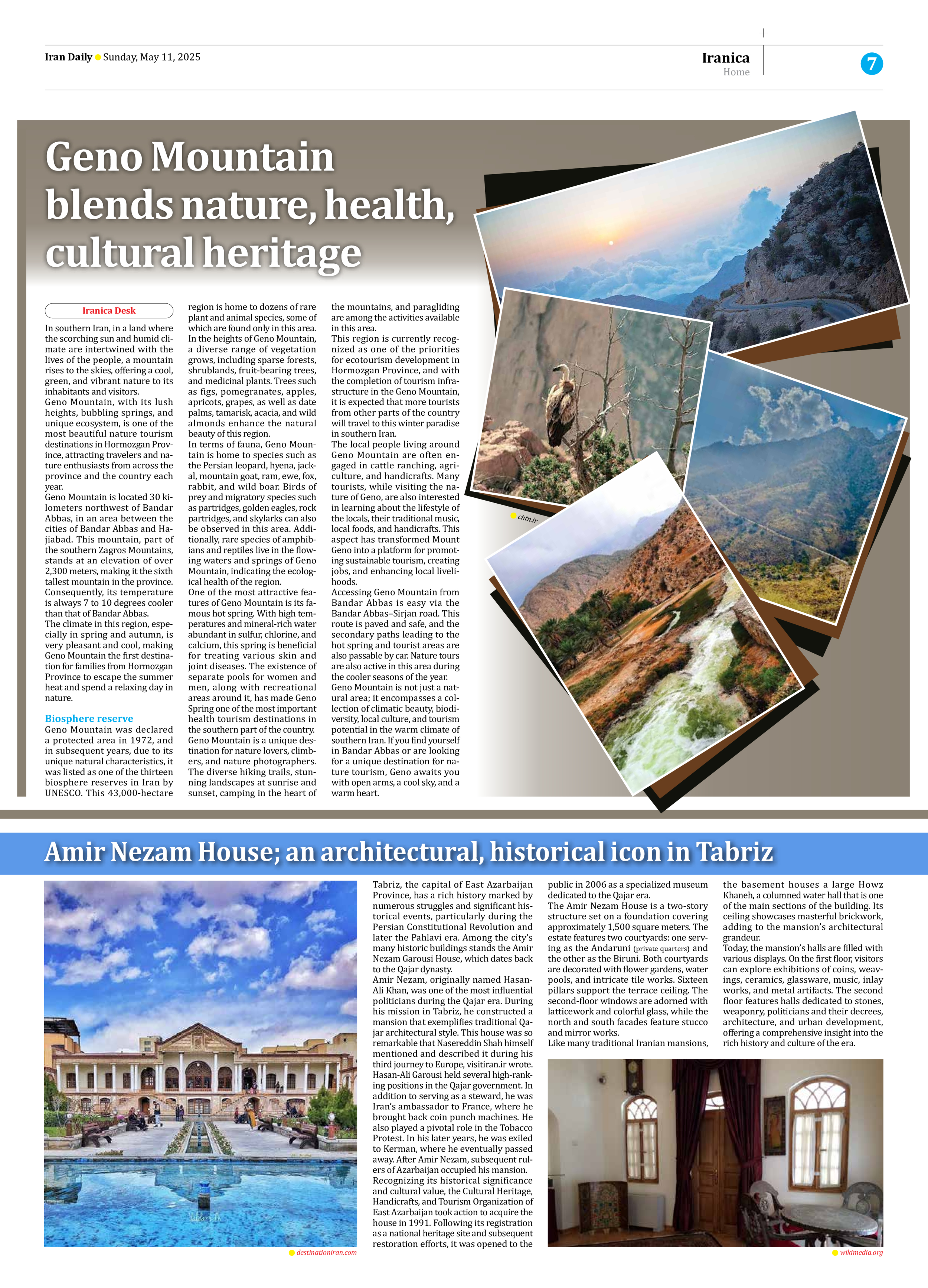
Copy in clipboard...
Amir Nezam House; an architectural, historical icon in Tabriz
Amir Nezam, originally named Hasan-Ali Khan, was one of the most influential politicians during the Qajar era. During his mission in Tabriz, he constructed a mansion that exemplifies traditional Qajar architectural style. This house was so remarkable that Nasereddin Shah himself mentioned and described it during his third journey to Europe, visitiran.ir wrote.
Hasan-Ali Garousi held several high-ranking positions in the Qajar government. In addition to serving as a steward, he was Iran’s ambassador to France, where he brought back coin punch machines. He also played a pivotal role in the Tobacco Protest. In his later years, he was exiled to Kerman, where he eventually passed away. After Amir Nezam, subsequent rulers of Azarbaijan occupied his mansion.
Recognizing its historical significance and cultural value, the Cultural Heritage, Handicrafts, and Tourism Organization of East Azarbaijan took action to acquire the house in 1991. Following its registration as a national heritage site and subsequent restoration efforts, it was opened to the public in 2006 as a specialized museum dedicated to the Qajar era.
The Amir Nezam House is a two-story structure set on a foundation covering approximately 1,500 square meters. The estate features two courtyards: one serving as the Andaruni (private quarters) and the other as the Biruni. Both courtyards are decorated with flower gardens, water pools, and intricate tile works. Sixteen pillars support the terrace ceiling. The second-floor windows are adorned with latticework and colorful glass, while the north and south facades feature stucco and mirror works.
Like many traditional Iranian mansions, the basement houses a large Howz Khaneh, a columned water hall that is one of the main sections of the building. Its ceiling showcases masterful brickwork, adding to the mansion’s architectural grandeur.
Today, the mansion’s halls are filled with various displays. On the first floor, visitors can explore exhibitions of coins, weavings, ceramics, glassware, music, inlay works, and metal artifacts. The second floor features halls dedicated to stones, weaponry, politicians and their decrees, architecture, and urban development, offering a comprehensive insight into the rich history and culture of the era.







